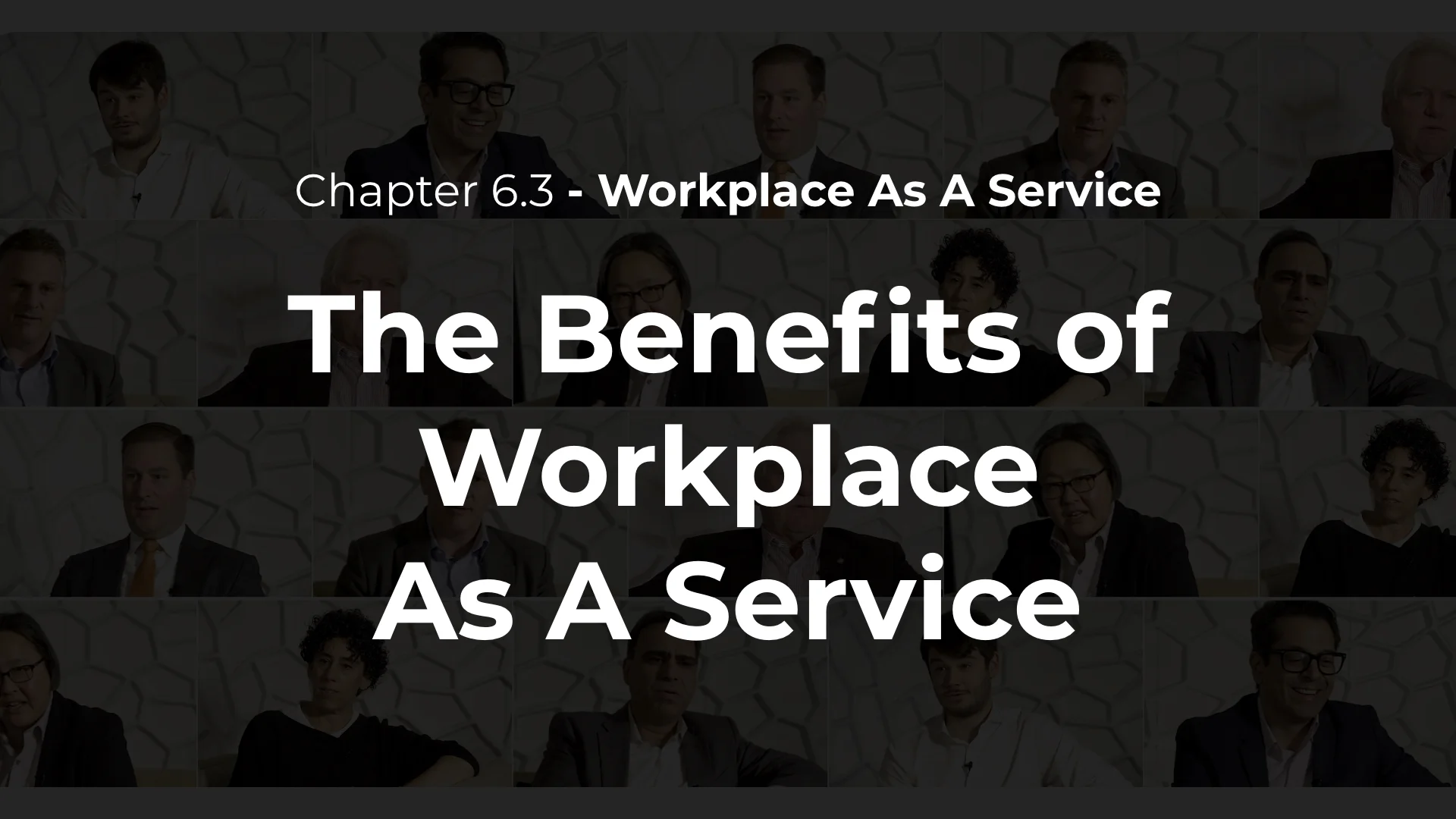Inside CRE Tech • Episode 6.3
The Benefits of Workplace As A Service
Read Transcript:
Tama Huang, Chief Innovation Officer, CohnReznick
It’s an interesting one…
John Gilbert, EVP, COO, CTO, Rudin Management
I think small startups really benefit the most…
Hussain Ali-Khan, Global Alliance Director, CBRE
workers the service operators…
Kent Tarrach, VP, Asset Management & Global Corporate Development, Brookfield
Done the right way, I believe both landlords and occupants will benefit from workplaces of service.
Adam Stoltz, National Director, Consulting Services - Transwestern
Occupants of space. The employees who work in organizations are the ones that benefit the most from workplace as and service. If they don't benefit a lot I'm not sure that it's going to have as long life as many of us believe that it can.
John Gilbert, EVP, COO, CTO, Rudin Management
They have access to an ecosystem that they couldn't possibly build themselves and yet it's next door down the hall one floor below where they can ultimately grab and purchase these services on a this is what I need now basis, rather than create that whole infrastructure within their own company, and waste a lot of ultimately resources that they may or may not have at that time.
Tama Huang, Chief Innovation Officer, CohnReznick
Those that are interested in having flexibility in terms of their workspace are the biggest winners. When I don't know how much space I need today versus tomorrow, when I don't know where I'm going to need my space today versus tomorrow. Having the flexibility that is what, you know, what this industry is starting to provide me now. I don't need to commit to a 10 year lease and be limited by a certain number of square feet or by a specific location, if demographics shift, if my business model shifts, right. Workplace as a service allows me to look at that in the same way that I would go about using Uber or renting a car versus buying a car.
Kent Tarrach, VP, Asset Management & Global Corporate Development, Brookfield
On the owner and operator side, it's a new revenue channel for us. It allows us to reimagine all the different services that we can offer and of course there's revenue opportunities associated with many of those. And it also allows us to get more creative in the programming of our space, so that we can create a closer relationship with our tenancy, and by doing that it increases the called stickiness that they'll want to stay within our portfolio.
Hussain Ali-Khan, Global Alliance Director, CBRE
When you when you look closely at the business models of these workplaces the service companies are very very impressive. They're buying space wholesale and renting it out retail and they've can achieve targets of like less than 100 square feet per person, less than 50, maybe 1, you know like a gym kind of approach. And I know that that's not the model. It's not meant to be a gym or a gym membership like that. However, I think that those companies have really picked up on an aspect of American commercial real estate which is that we basically have too much.
Gabrielle Rubin Deveaux, Global Real Estate & Facilities, Buzzfeed
It can be the tenant if they just need a short term space and they don't have a lot of time. It's always about time and it's not a lot of exposure upfront as far as money. It's probably a win win, I think it's one hand washes the other. As long as we have flexibility with the term of the lease and the opportunity to also grow within, then that's a win win.
Hussain Ali-Khan, Global Alliance Director, CBRE
Traditionally, companies would rent real estate and use them for like 10 hours a day, maybe. The evidence for that is that almost every lease has a clause in it for overtime air conditioning, so nobody's like working past 6 o’clock or if you do you gotta like ask for it and then you pay through the nose to get it.
Kent Tarrach, VP, Asset Management & Global Corporate Development, Brookfield
On the occupants side, they're gonna get the benefit of increased flexibility around again how they're programming their spaces. They will be able to offload some of the tasks associated with managing their real estate to the landlords, so again they can focus on on their core businesses.
Hussain Ali-Khan, Global Alliance Director, CBRE
So if you look closely as the occupancy statistics of that space, it has a very interesting kind of camel curve to it. Our studies have shown that in any particular workplace, and it doesn't seem to matter what kind of a team there is that works there. But occupancy goes up to about 85% at 10am in the morning, and then it crashes to about 50% at lunchtime, and then it never comes back. It only goes back up to like 65%. Where did everybody go? So you've got this asset which you're paying a ton of money for that's only be used on average about 70%. So, why are we doing this, 70% during the first shift. Nobody's there during the other two shifts. So those are some tough questions that asset managers and corporate real estate executives need to ask themselves. Is there a really really good reason to have this office or am I better off using workplace as a service?



